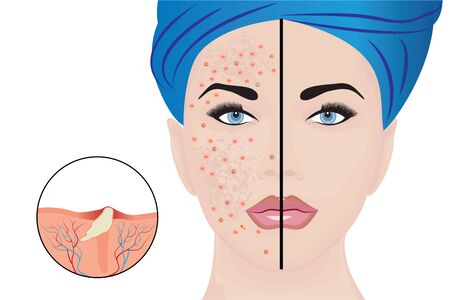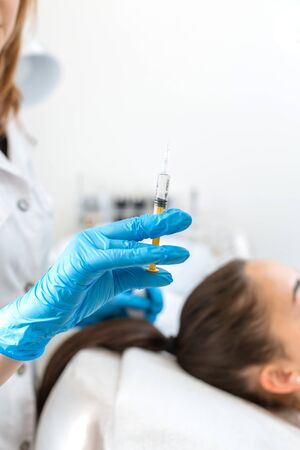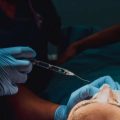Introduction to Wrinkle Reduction Myths and Facts
In the UK, wrinkle reduction treatments have become an increasingly popular option for those seeking to maintain a youthful appearance. From London’s high street clinics to local beauty salons across the country, a wide range of procedures and products promise to smooth fine lines and rejuvenate tired skin. However, with this growing interest comes a host of myths, misconceptions, and sometimes questionable advice that can make it difficult to discern what truly works from what is simply marketing hype. This article aims to separate fact from fiction by examining common beliefs about wrinkle reduction through a distinctly British lens. By understanding the truth behind these treatments, readers can make informed decisions that align with both their skincare goals and the realities of modern British life.
2. Common Myths Circulating in the UK
When it comes to wrinkle reduction, a number of persistent myths circulate within British society, often influencing how people approach ageing and aesthetic treatments. These misconceptions are shaped by local attitudes, social norms, and sometimes even by British humour or modesty regarding cosmetic interventions. Below is a summary of some of the most common myths encountered in the UK, along with concise explanations that clarify the facts:
| Myth | Explanation |
|---|---|
| Wrinkle creams can erase wrinkles overnight | Many Britons believe that over-the-counter products deliver instant results. In reality, while some creams may hydrate or temporarily plump the skin, no topical product can eliminate deep wrinkles instantly. |
| Wrinkle reduction is only for women | There is a prevailing notion that anti-wrinkle treatments are a ‘female concern’. However, men across the UK are increasingly seeking such solutions, and these treatments are effective for all genders. |
| Injectables lead to an unnatural look | A common fear is ending up with a ‘frozen’ or ‘overdone’ appearance. In truth, modern techniques used by qualified practitioners aim for subtle, natural-looking results tailored to individual facial features. |
| It’s too late to start wrinkle reduction after a certain age | Some believe that if you haven’t started young, there’s no point later on. The fact is, benefits can be achieved at any age with appropriate treatments and professional advice. |
| All wrinkle reduction treatments are painful and require lengthy downtime | This misconception often puts people off. Most modern procedures involve minimal discomfort and little to no recovery time, allowing patients to return to their daily routine swiftly. |
These myths reflect local perspectives in the UK, where scepticism and concerns about natural appearance often shape attitudes towards cosmetic procedures. By understanding and addressing these misconceptions, individuals can make more informed decisions about their wrinkle reduction options.

3. Evidence-Based Facts About Wrinkle Reduction
When it comes to wrinkle reduction, separating fact from fiction is crucial, particularly within the context of trusted UK medical guidance. According to the NHS and leading British dermatologists, several science-backed truths underpin effective wrinkle management.
Topical Treatments: What Really Works?
The NHS states that some over-the-counter creams containing retinoids (vitamin A derivatives), peptides, and antioxidants can modestly improve fine lines and skin texture. However, it is important to note that their effects are typically temporary and less dramatic than professional interventions. UK dermatologists recommend products with proven active ingredients, such as retinol and vitamin C, while warning against overhyped “miracle” creams lacking clinical evidence.
Professional Interventions: Safe and Effective Options
Science supports several medical procedures for wrinkle reduction. According to NHS guidance and the British Association of Dermatologists, treatments like Botulinum toxin injections (Botox), dermal fillers, chemical peels, and laser resurfacing have robust evidence for reducing wrinkles and rejuvenating the skin. These treatments should always be performed by qualified medical professionals registered with the General Medical Council (GMC) or the Nursing and Midwifery Council (NMC) to ensure safety and optimal results.
The Role of Lifestyle: Prevention and Maintenance
British experts agree that lifestyle modifications play a significant role in wrinkle prevention. The NHS emphasises sun protection as the most effective way to slow premature ageing—regular use of broad-spectrum SPF 30+ sunscreen is recommended even in cloudy UK weather. Additionally, avoiding smoking, managing stress, maintaining hydration, and following a balanced diet rich in antioxidants can help maintain youthful skin.
Are Supplements Worth It?
While there is ongoing research into supplements like collagen and hyaluronic acid for skin health, current NHS and UK dermatologist consensus suggests that a balanced diet and topical treatments remain more reliable than oral supplements for visible wrinkle reduction.
In summary, evidence-based wrinkle reduction combines topical agents with proven efficacy, professional interventions under expert care, and preventive lifestyle habits. Always consult with NHS-registered professionals for personalised advice tailored to your unique skin needs.
4. The British Approach to Cosmetic Procedures
When it comes to wrinkle reduction and other aesthetic treatments, the British approach is notably distinct from trends observed in other countries. In the UK, cultural values such as discretion, modesty, and a reserved attitude towards personal appearance play a significant role in shaping public perception and individual choices. While the popularity of cosmetic interventions has grown, there remains a unique set of attitudes that influence how these procedures are discussed and pursued.
Discretion and Privacy
Many Britons prefer a subtle and understated look, often opting for treatments that provide natural results rather than dramatic changes. This sense of discretion extends to conversations about cosmetic work; it is common for individuals to keep their procedures private, sharing details only with close friends or family members. The “less is more” mentality is highly valued, and visible signs of intervention may be viewed with suspicion or even disapproval.
Modesty and Social Stigma
The concept of modesty in British culture means that overt displays of vanity or self-promotion are generally discouraged. As a result, there can be a social stigma attached to those who are perceived as excessively concerned with their appearance. Cosmetic procedures, particularly those aimed at wrinkle reduction, may therefore be associated with negative stereotypes or assumptions about superficiality.
Common Attitudes Towards Aesthetic Treatments in the UK
| Attitude | Description |
|---|---|
| Discretion | Preference for natural results and keeping procedures private |
| Modesty | Avoidance of overtly dramatic changes and self-promotion |
| Stigma | Concerns about being judged for seeking cosmetic intervention |
| Gradual Acceptance | Increasing openness, especially among younger generations |
Shifting Perspectives
It is important to note that attitudes are gradually evolving. Younger generations in the UK are becoming more open to discussing and embracing aesthetic treatments, including wrinkle reduction. Social media and increased access to reliable information have contributed to this shift. However, traditional values still exert a strong influence, making the British approach to cosmetic procedures both cautious and considerate.
Understanding these cultural nuances is essential for anyone considering wrinkle reduction in the UK. By recognising the local approach, patients and practitioners alike can make informed decisions that respect both individual desires and broader social expectations.
5. Weighing Up Safety and Regulation in the UK
When considering wrinkle reduction treatments, understanding the safety standards and regulatory framework within the UK is essential for making informed decisions. The United Kingdom has a robust system in place to ensure that aesthetic procedures such as anti-wrinkle injections are carried out safely and ethically.
The Role of Regulatory Bodies
Two primary organisations oversee the quality and safety of cosmetic treatments: the Care Quality Commission (CQC) and the General Medical Council (GMC). The CQC regulates clinics offering medical treatments, ensuring they meet stringent standards regarding cleanliness, staff qualifications, and patient care. This body carries out regular inspections and has the authority to take action if practices fall short of requirements.
Ensuring Practitioner Competency
The GMC is responsible for maintaining professional standards among doctors practising in Britain. It holds practitioners to account through licensing, continuous professional development, and ethical guidelines. Only those with appropriate training and qualifications should administer injectable wrinkle treatments; it’s a myth that anyone can legally offer these services without proper oversight.
Public Protection and Patient Confidence
These regulatory frameworks serve not only to protect public health but also to instil confidence in those seeking cosmetic interventions. Patients are encouraged to verify a provider’s credentials with both the CQC and GMC before proceeding with treatment. Ultimately, while regulations in the UK are designed to minimise risks, individuals must remain vigilant and choose reputable professionals who adhere strictly to British safety standards.
6. Making Informed Decisions: Practical Tips for Britons
When considering wrinkle reduction treatments in the UK, making informed decisions is essential for achieving both safe and satisfying results. Here are some practical tips tailored for Britons seeking to navigate the landscape of cosmetic procedures:
Choose Reputable Practitioners
Always verify the credentials and experience of your practitioner. In the UK, reputable professionals should be registered with the General Medical Council (GMC) or the Nursing and Midwifery Council (NMC). Look for clinics that are regulated by the Care Quality Commission (CQC), which ensures they adhere to strict safety standards. Don’t hesitate to ask about qualifications, specific experience with wrinkle reduction treatments, and to view before-and-after photos of previous patients.
Manage Your Expectations Realistically
Understanding what wrinkle reduction treatments can and cannot achieve is key to avoiding disappointment. While these procedures can smooth lines and refresh your appearance, they won’t completely turn back the clock or replicate the effects of more invasive surgery. Discuss your goals openly during consultations, and ensure your practitioner provides a realistic outline of achievable results based on your skin type, age, and lifestyle factors.
Ensure Safe Treatment Experiences
Safety should always come first. Only undergo procedures in clinical environments that maintain high hygiene standards. Avoid non-medical settings such as beauty salons or “pop-up” clinics, which may not meet UK regulatory requirements. Confirm that only approved products and technologies are used for your treatment; this is especially important in light of recent concerns about counterfeit injectables circulating in some parts of the UK.
Ask the Right Questions
During your consultation, don’t be afraid to ask detailed questions: What are the potential risks? What aftercare is required? What should you do if you experience side effects? A trustworthy practitioner will welcome your queries and provide clear, comprehensive answers.
Stay Informed About Regulations
The UK regularly updates its guidelines regarding non-surgical cosmetic treatments. Familiarise yourself with current recommendations from trusted sources such as the NHS and Save Face. Being informed helps you recognise red flags and empowers you to make choices that protect your wellbeing.
By following these tips, Britons can approach wrinkle reduction with confidence—choosing safe providers, setting realistic expectations, and prioritising their health throughout every stage of treatment.
7. Conclusion: Separating Sense from Sensationalism
In the pursuit of smoother, more youthful-looking skin, it is all too easy to be swayed by bold claims and popular misconceptions surrounding wrinkle reduction. As we have explored from a British perspective, many widely held beliefs are not grounded in fact but rather in marketing hype or hearsay. Therefore, it is crucial to approach wrinkle reduction with a balanced and sensible mindset, steering clear of sensational promises and miracle cures. Consulting reliable sources of information and seeking advice from qualified professionals—such as NHS-approved dermatologists or certified practitioners—is essential for making informed decisions about your skin health. Remember, what works for one person may not work for another, and understanding the science behind each treatment is key. Ultimately, prioritising evidence-based guidance over fads will help you achieve realistic results while maintaining your wellbeing. By separating sense from sensationalism, you empower yourself to choose the most suitable and effective wrinkle reduction strategies, ensuring your journey towards healthy, radiant skin is both safe and successful.


